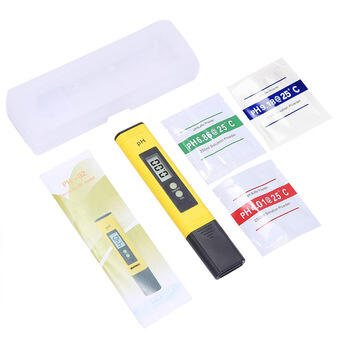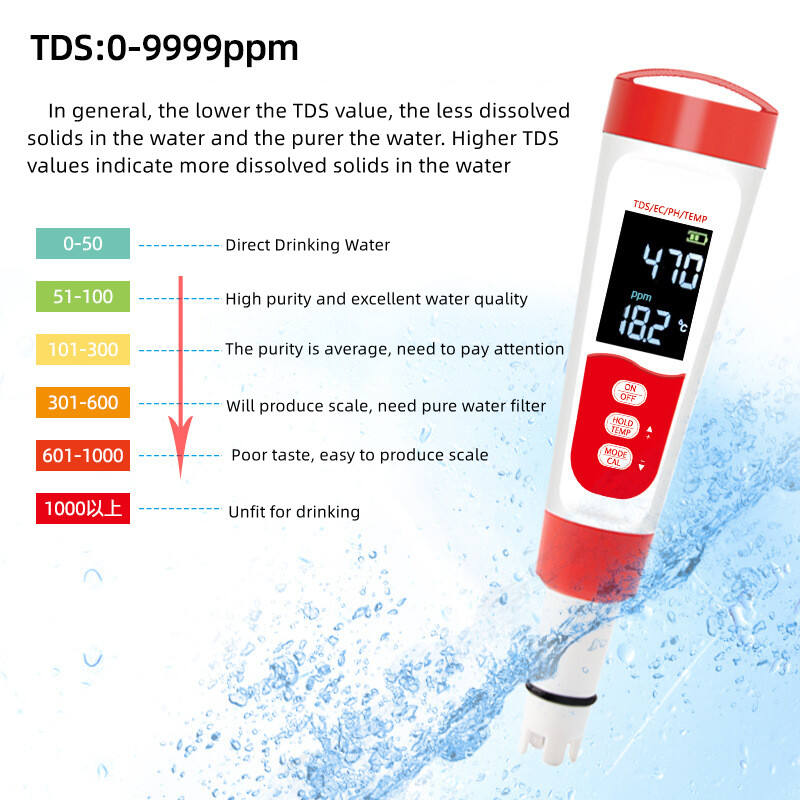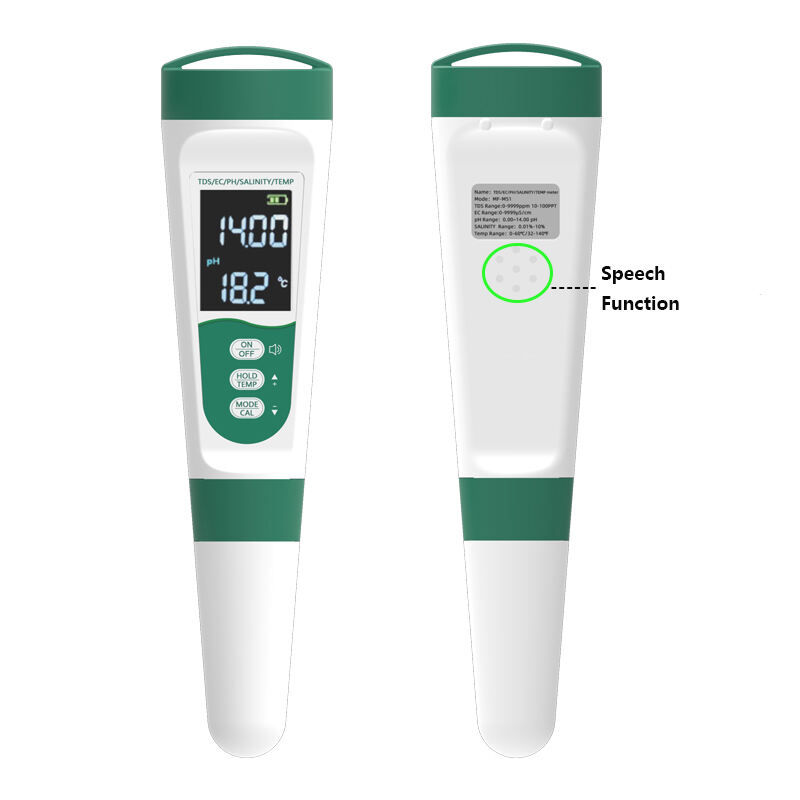পিএইচ টিডিএস
একটি pH TDS মিটার হল একটি গুরুত্বপূর্ণ বিশ্লেষণাত্মক যন্ত্র যা তরলের মধ্যে pH স্তর এবং মোট দissolved পদার্থ (TDS) পরিমাপের ক্ষমতাকে একত্রিত করে। এই বহুমুখী যন্ত্র জলের গুণগত পরামিতির ঠিক পাঠ্য দেয়, যা বিভিন্ন শিল্প এবং অ্যাপ্লিকেশনে অপরিসীম মূল্যবান। pH পরিমাপের ক্ষমতা একটি 0-14 স্কেলে দ্রবণের অম্লতা বা ক্ষারতা নির্ধারণ করে, আর TDS ফাংশন মিলিগ্রাম প্রতি লিটার (mg/L) বা অংশ প্রতি মিলিয়ন (ppm) এ দissolved পদার্থের ঘনত্ব পরিমাপ করে। আধুনিক pH TDS মিটারে ডিজিটাল ডিসপ্লে, তাপমাত্রা সংশোধন এবং স্বয়ংক্রিয় ক্যালিব্রেশন ফাংশন রয়েছে, যা বিভিন্ন পরিবেশগত শর্তাবলীতে নির্ভরযোগ্য পাঠ্য নিশ্চিত করে। এই যন্ত্রগুলি সাধারণত উন্নত ইলেকট্রোড প্রযুক্তি ব্যবহার করে pH অনুভূতি এবং বৈদ্যুতিক পরিবাহিতা নীতি ব্যবহার করে TDS পরিমাপ করে। যন্ত্রটির দ্বিগুণ কাজের ক্ষমতা জল প্রস্কারণ সুবিধায়, হাইড্রোপনিক্স, জলজ পালনী, সুইমিং পুল রক্ষণাবেক্ষণ এবং পরীক্ষাগারের সেটিংগে বিশেষভাবে উপযোগী। অনেক মডেলে ডেটা লগিং ক্ষমতা, জলপ্রতিরোধী নির্মাণ এবং ক্ষেত্র ব্যবহারের জন্য স্থানচ্যুত ডিজাইন রয়েছে। একটি একক যন্ত্রে pH এবং TDS পরিমাপের একত্রিত করা শুধুমাত্র সুবিধা দেয় কিন্তু জলের গুণগত পরামিতি বিশ্লেষণের সময় সঙ্গত এবং সম্পর্কযোগ্য ফলাফল নিশ্চিত করে।


